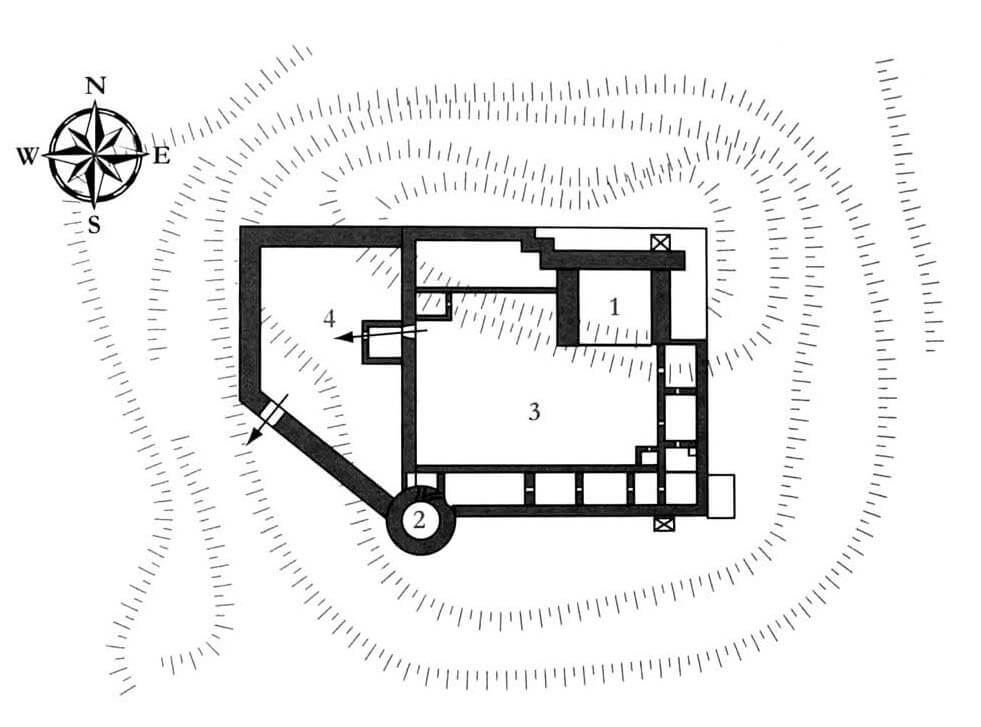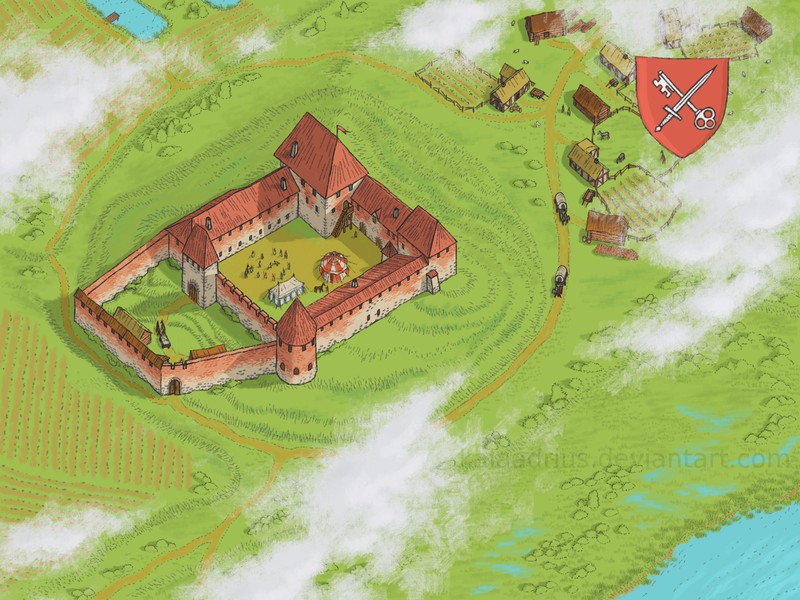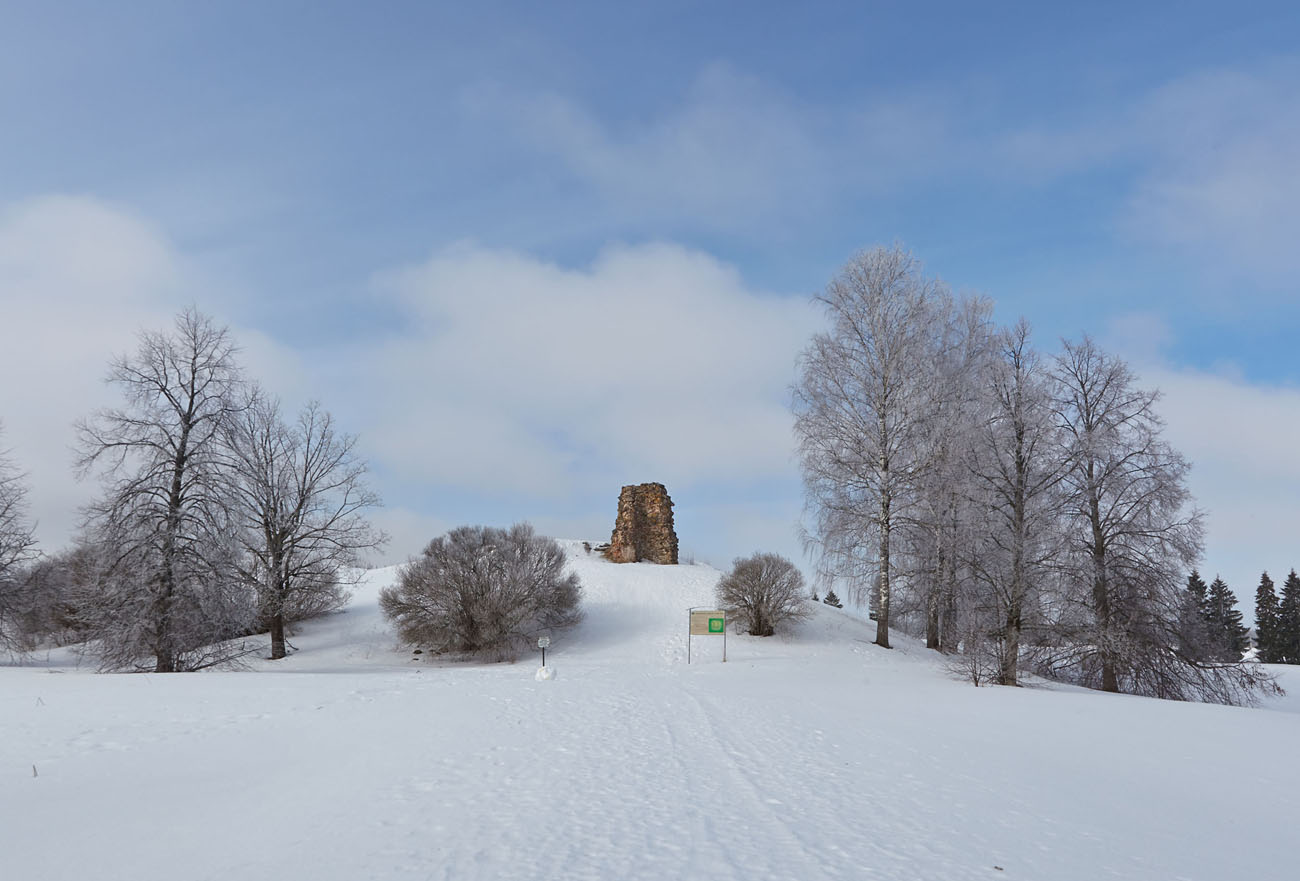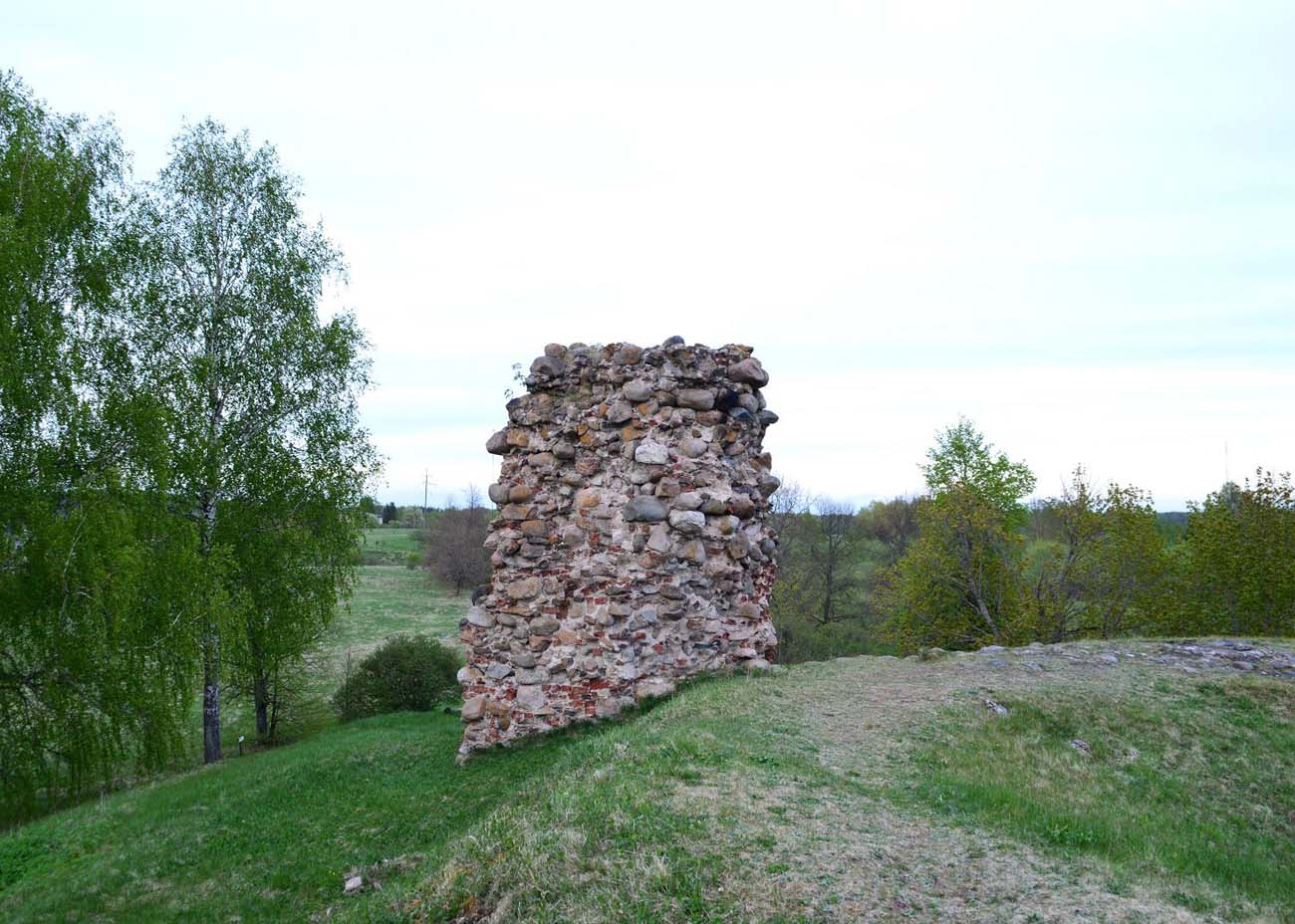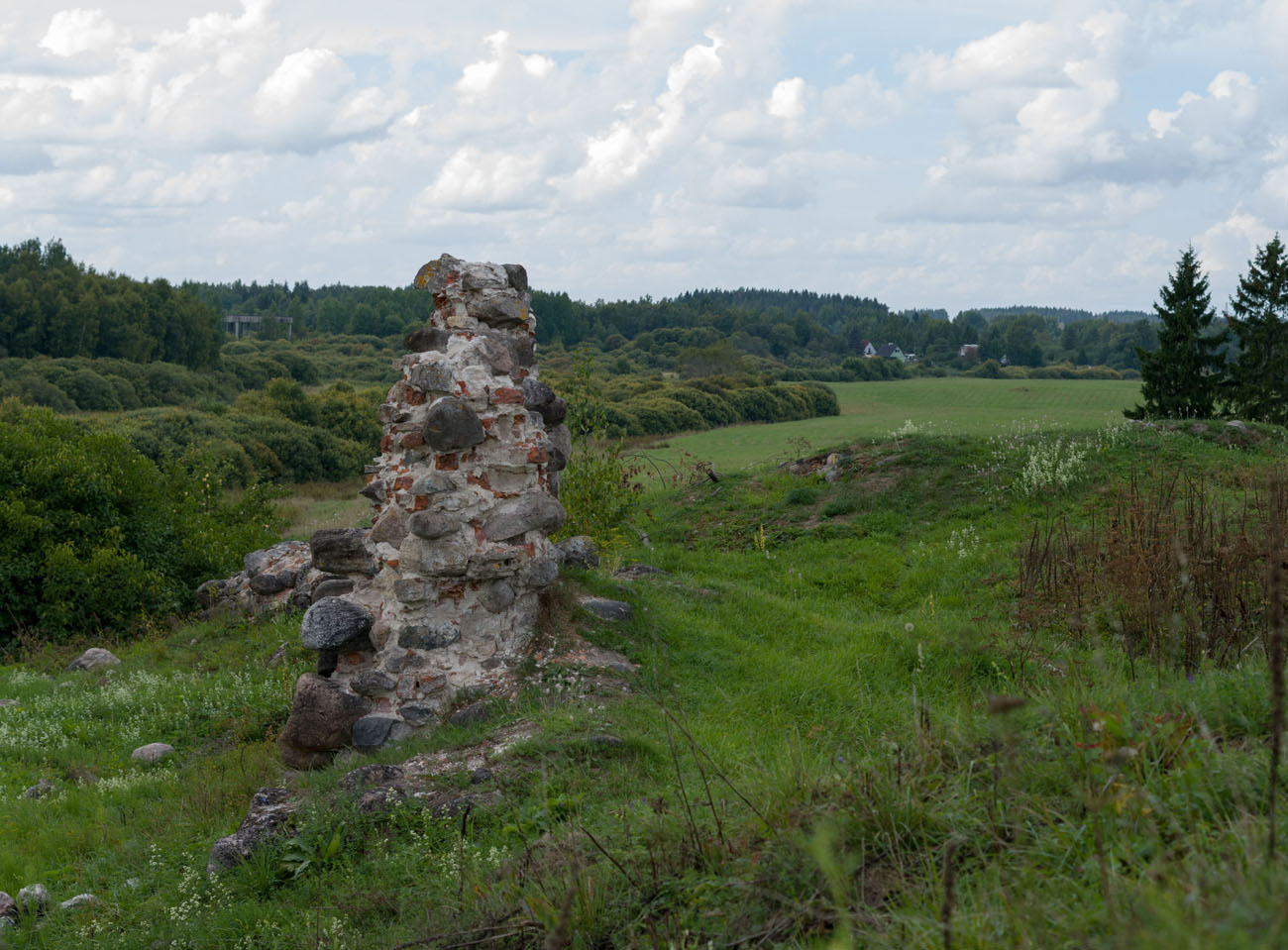History
The first mention of the castle of the duke bishop of Dorpat dates from 1322, when it was destroyed by the army of the grand duke of Lithuania Gediminas. At that time it was a roadside watchtower guarding the southern trade route from Dorpat to Ruthenia and the eastern border of the Dorpat bishopric. Because of its frontier location, the castle was repeatedly besieged and demolished, both by Lithuanian and Ruthenian armies. Like the entire bishopric of Dorpat, Kirrumpah was destroyed in 1558 by the army of Ivan the Terrible, but the castle itself was saved from the final demolition by the local population, thanks to which it took part in the struggle in 1656 and 1701. At the latest from the beginning of the 18th century it was in ruin, its remains unfortunately served as a source of building material, with the expansion of the modern city of Võru.
Architecture
The castle was erected on a low, oval hill, situated in the bend of the Võhandu river. In its original form, it consisted of a massive four-sided residential tower and a courtyard surrounded by a wall to the south-east. Even then, a chapel must have functioned in the castle, probably on the first floor of that tower.
In the second half of the fifteenth century, reconstruction was carried out and the western fortifications and the cylindrical artillery tower located in the southwest corner of the main castle were added to the current fortifications. Probably at that time the main castle courtyard was also partially built up. The houses in its courtyard were added to the southern and eastern curtains, the oblong house also filled space on the north side between the main tower and the western curtain. A quadrilateral gatehouse was situated by the western curtain, it was entirely extended in front of the perimeter, and from the second half of the 15th century inside the outer ward.
Current state
At present, only the very modest stone relics on the hill resemble the existence of the castle. Entrance to the castle area is free.
bibliography:
Borowski T., Miasta, zamki i klasztory. Inflanty, Warszawa 2010.
Tuulse A., Die Burgen in Estland und Lettland, Dorpat 1942.

